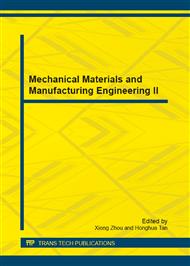p.243
p.250
p.256
p.262
p.268
p.274
p.280
p.285
p.292
Microstructure Characterization of Graphite Cathodes for Explosive Field-Emission
Abstract:
Explosive field-emission graphite has the advantages of low cost, long lifetime, low outgassing rate and can operate stably at a large number of pulses, thus it has become an important candidate for repetition frequency, long-pulse high-power microwave (HPM) devices. In this paper, two types of graphite cathodes with different microstructures are investigated on their explosive field-emission properties. These cathodes are operated in a vacuum diode system at a voltage of 230 kV and a pulse duration of ~110 ns. The study reveals that the graphite cathode with smaller, cross-linked grains generates higher current at shorter current risetime compared to the cathode with larger grains. Furthermore, the microstructure defect regions of the graphite cathodes are more susceptible to destruction than the perfect microcrystalline regions during explosive emission process due to the combination effects of explosion of surface microprotrusions and Joule heating.
Info:
Periodical:
Pages:
268-273
Citation:
Online since:
December 2012
Authors:
Keywords:
Price:
Сopyright:
© 2013 Trans Tech Publications Ltd. All Rights Reserved
Share:
Citation:


